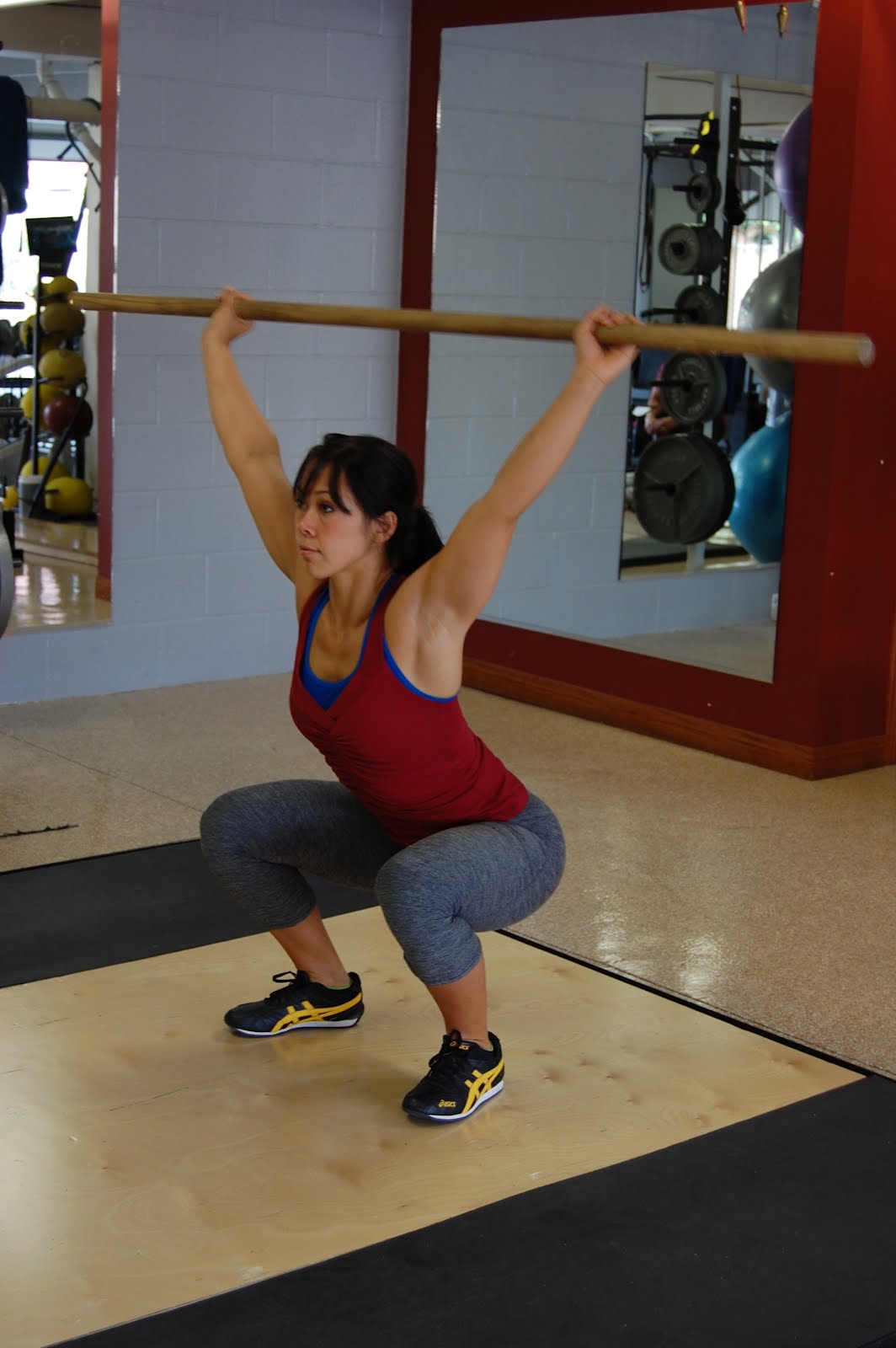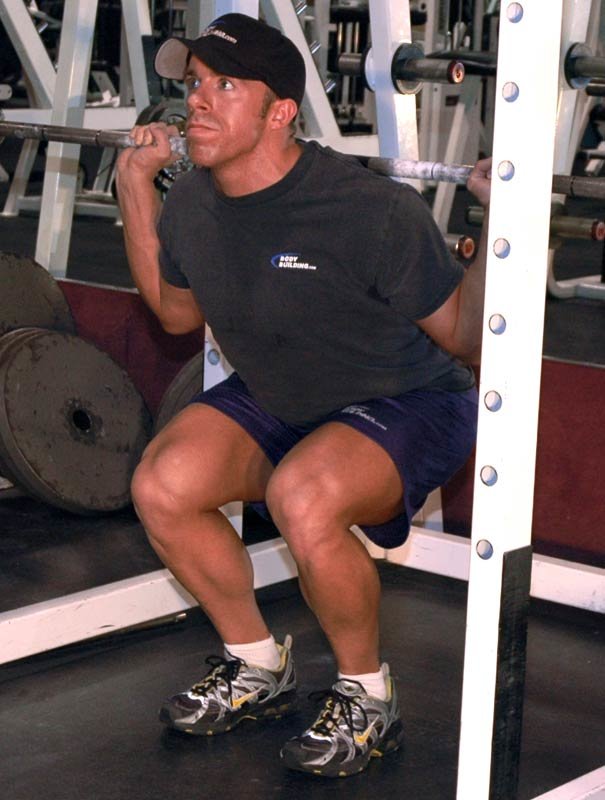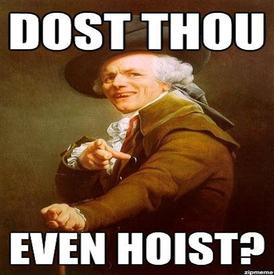Deep Squats & Positioning

michellekicks
Posts: 3,624 Member
Hi all,
I'm looking for some information and/or resources to improve my squat technique. Here's my dilemma: I have poor internal hip rotation. I discovered this during my years of kickboxing training and while I haven't ever really focused on improving it through stretching, that's obviously something I should do.
I've started Stronglifts 5x5 and want to give myself the best possible outcome without injury. I'm moving some fairly significant weight now and want to know what other people are doing.
I started with my feet parallel and my thighs going to right around 90 degrees. This is as low as I can go with my feet positioned this way. I have done all my workouts this way to date except for one. Last session, I widened my knees and angled my feet slightly out, which enables me to go way deep... like @ss to grass as they say. I'm stiff from it today (since I still progressed my weights even though I hadn't done with this form before) but it felt better while I was doing it.
I'm reading some conflicting information. I understand feet turned out is bad, but I wonder if that's just with knees pointed forward? Or if your knees are angled with your feet is that okay? Here's a pic of what I'm talking about:

What do you think of this form? Is this what you look like squatting? Is it better to keep knees and feet parallel?
This one is a little closer... (nevermind that she doesn't have a barbell please... I'm just looking at her legs)

Then there's a parallel, much narrower stance...

For sure the closer my knees get together, the less deep I can go. I'm not sure where the trade-off occurs. I want to go deep but I don't want to get hurt.
What do your squats look like?
I'm looking for some information and/or resources to improve my squat technique. Here's my dilemma: I have poor internal hip rotation. I discovered this during my years of kickboxing training and while I haven't ever really focused on improving it through stretching, that's obviously something I should do.
I've started Stronglifts 5x5 and want to give myself the best possible outcome without injury. I'm moving some fairly significant weight now and want to know what other people are doing.
I started with my feet parallel and my thighs going to right around 90 degrees. This is as low as I can go with my feet positioned this way. I have done all my workouts this way to date except for one. Last session, I widened my knees and angled my feet slightly out, which enables me to go way deep... like @ss to grass as they say. I'm stiff from it today (since I still progressed my weights even though I hadn't done with this form before) but it felt better while I was doing it.
I'm reading some conflicting information. I understand feet turned out is bad, but I wonder if that's just with knees pointed forward? Or if your knees are angled with your feet is that okay? Here's a pic of what I'm talking about:

What do you think of this form? Is this what you look like squatting? Is it better to keep knees and feet parallel?
This one is a little closer... (nevermind that she doesn't have a barbell please... I'm just looking at her legs)

Then there's a parallel, much narrower stance...

For sure the closer my knees get together, the less deep I can go. I'm not sure where the trade-off occurs. I want to go deep but I don't want to get hurt.
What do your squats look like?
0
Replies
-
When I do squats, my legs look more like the middle one, but that's because it's comfortable for me. My mind isn't distracting by feeling awkward so I'm more able to focus on lifting the weights and getting a good burn0
-
they all look fine. Here's the thing about squats for foot position, there is no one way to do it. This is because hip alignment is genetic and can vary from person to person.
When doing squats, there are a few rules though.
1) Hips, knees and toes will ALWAYS track in the same line throughout the lift regardless of foot position. This is seen perfectly in the first pic. feet are pointed out, and knees are in line with toes.
2) Shins and back will be parallel throughout the lift. (exception being to lowbar or front squat which alters the back angle slightly). This runs counter to the 'knees never go past your toes' BS rule people spout out. But it's important. if your back is more bent over to your shins, you're gonna have huge back and hip strain. If your back is mostly vertical, you're going to have huge knee strain.
3) Go to parallel or lower. the 3rd pic is above parallel. Though a snapshot doesn't really mean much as he very well could have hit depth. The second and first pics are acceptable depth. If you have trouble hitting depth then do box squats till you get the balance/strength to do them unassisted.
edit: you will also notice that most EVERY person who squats very heavy for comp will go feet wider than shoulder width with toes out to match. sometimes to absurd levels. If feet out were in any way dangerous, I would assume that the pros with 1000lbs on their back would not be doing it.0 -
they all look fine. Here's the thing about squats for foot position, there is no one way to do it. This is because hip alignment is genetic and can vary from person to person.
When doing squats, there are a few rules though.
1) Hips, knees and toes will ALWAYS track in the same line throughout the lift regardless of foot position. This is seen perfectly in the first pic. feet are pointed out, and knees are in line with toes.
2) Shins and back will be parallel throughout the lift. (exception being to lowbar or front squat which alters the back angle slightly). This runs counter to the 'knees never go past your toes' BS rule people spout out. But it's important. if your back is more bent over to your shins, you're gonna have huge back and hip strain. If your back is mostly vertical, you're going to have huge knee strain.
3) Go to parallel or lower. the 3rd pic is above parallel. Though a snapshot doesn't really mean much as he very well could have hit depth. The second and first pics are acceptable depth. If you have trouble hitting depth then do box squats till you get the balance/strength to do them unassisted.
edit: you will also notice that most EVERY person who squats very heavy for comp will go feet wider than shoulder width with toes out to match. sometimes to absurd levels. If feet out were in any way dangerous, I would assume that the pros with 1000lbs on their back would not be doing it.
Thank you for this. It makes me feel way better about it. I think I'll continue with form more like the first pic. Feels better for me. There was one site that was saying, basically, I should just be stretching out my hips until I have the inward rotation to squat "properly" and deeply with my legs parallel... but yeah, I end up pretty much looking like dude #3 at best.0 -
check out hte youtube video series 'so you think you can squat'0
-
Feet should be turned out at a 30-45 degree "natural" angle.
Knees should be forced out to track parallel over feet.
Back angle will vary a lot based upon body structure. Long torso/short legs provides a more vertical torso, and is highly advantageous for squatting. Long legs/short torso create a steeper back angle, and are highly disadvantageous for squatting. Low-bar squats (first picture looks great) are much better for the latter morphology.0 -
 0
0 -
These are taken from the book 'Starting Strength' by Mark Rippetoe and Lon Kilgore.
"1.Without a bar, squat all the way down.
2.Put your left elbow inside your left knee and your right elbow inside your right knee.
3.Clasp your hands together between your knees.
4.Your elbows will be pushing your knees outward and you'll feel a stretch inside your thighs.
5.Make sure that your feet are pointing in the same direction as your knees.
6.Note the distance between your heels. If this isn't exactly how wide your stance should be it's damn close.
7.If your hams aren't touching your calves, stay in this position for a few seconds and stretch yourself out.
8.Stand up, thinking about lifting your tailbone first. Don't push with the legs as much as you think about lifting the tailbone. This is the first movement out of the bottom of the squat.
9.Repeat "
AND
"2. Make necessary adjustments so that stance width is proper, i.e. heels at ~ shoulder width, feet pointed in a "neutral" manner, ~30 degrees outward. ~30 degrees is "neutral" because as you widen your stance, your toes need to point outward in order to maintain proper patellar alignment with the thigh bones (toes in line with knees). When your heels are at approximately shoulder width, your toes will need to be pointed ~30 degrees outward. "
I've used a low bar squat for powerlifting for the last 2 years. My stance is almost identical to the first one at the top. My feet may even be farther apart and pointed out more. As long as you are comfortable, you should be fine. It won't do you any good to 'correct' your form if the correction is stressing your joints and causing pain. You should not be feeling any stress in your hips or knees while squatting.0 -
Lots of useful info here, I think after reading this I may experiment with a few different squat stances0
-
Good thread thus far.
It looks like you have long legs which makes you prone to bowing them out. How tall are you? A lot of your squat form really depends on your build. Some people who are taller or with longer legs can't dip below the 90 nor should they. It also depends on what part you're trying to focus in on.
A few people covered the basics here on proper form. The rest is dependent on your own body type and what you want to accomplish.
i.e.: I'm a pure bred mesomorph - 5'7" fully proportional. I can get my *kitten* to the ground if I wanted to. Feet pointed out, legs shoulder width apart, looking up, bird chest, arms close to body and try to dip just below parallel. Now if I wanted more inner leg/groin involvement I would move my legs out to a "sumo" position. For more focus on the "teardrop" of the vastus medialis I'll put the bar in front.0 -
This is one I never have to worry about doing wrong because I can't do it at all. Can't get me left hand anywhere close to that far back. Dumbbell squats and V squat machine is my limit.0
-
Good thread thus far.
It looks like you have long legs which makes you prone to bowing them out. How tall are you? A lot of your squat form really depends on your build. Some people who are taller or with longer legs can't dip below the 90 nor should they. It also depends on what part you're trying to focus in on.
A few people covered the basics here on proper form. The rest is dependent on your own body type and what you want to accomplish.
i.e.: I'm a pure bred mesomorph - 5'7" fully proportional. I can get my *kitten* to the ground if I wanted to. Feet pointed out, legs shoulder width apart, looking up, bird chest, arms close to body and try to dip just below parallel. Now if I wanted more inner leg/groin involvement I would move my legs out to a "sumo" position. For more focus on the "teardrop" of the vastus medialis I'll put the bar in front.
Not particularly tall - I'm 5'7" and about 160 lbs. I think I'm pretty meso too... but I definitely have some mechanical quirks i.e. virtually no inward hip rotation... I also can't lock my elbows at all... they're always bent, even when straight. Very strange for sure, but I have to work with what I have.0
This discussion has been closed.
Categories
- All Categories
- 1.4M Health, Wellness and Goals
- 398.2K Introduce Yourself
- 44.7K Getting Started
- 261K Health and Weight Loss
- 176.4K Food and Nutrition
- 47.7K Recipes
- 233K Fitness and Exercise
- 462 Sleep, Mindfulness and Overall Wellness
- 6.5K Goal: Maintaining Weight
- 8.7K Goal: Gaining Weight and Body Building
- 153.5K Motivation and Support
- 8.4K Challenges
- 1.4K Debate Club
- 96.5K Chit-Chat
- 2.6K Fun and Games
- 4.8K MyFitnessPal Information
- 12 News and Announcements
- 21 MyFitnessPal Academy
- 1.6K Feature Suggestions and Ideas
- 3.2K MyFitnessPal Tech Support Questions






